Strada, La (1954)
“Are you really a woman? You look like an artichoke.”
|
Synopsis: |
|
Genres, Themes, Actors, and Directors:
Response to Peary’s Review: Masina’s Gelsomina gets numerous offers to leave her life and start anew — including to “join a circus, run off with a clown and tightrope walker… or stay in a convent” — but “she becomes convinced that Quinn really does need her,” and “perhaps he loves her.” Peary asserts that “Masina mugs too much,” but concedes “she’s captivating. With a round face, dimples, and large, expressive eyes, she has the look of a clown” and will “remind you of a cross between Harpo Marx, Charlie Chaplin, and a puppy.” Peary argues that her “serious scenes don’t really work because her temporary switch from gamine to disgruntled adult is too swift,” and “the result is that her performance seems inconsistent, although the real problem is with the character.” He further adds that “Quinn’s character is also a bit hard to figure out — it’s true that the bigger they are, the harder they fall, but when the mighty Quinn lies in a drunken heap, what is he thinking?” I don’t share Peary’s concerns about either character. While it’s true that Gelsomina undergoes significant changes, this is because she’s been thrown out into the world for the first time and is finally meeting a wide range of people. She’s learning that she doesn’t have to simply comply and fit in and “act dumb”. Meanwhile, Quinn’s character (as Martin Scorsese — a huge fan of the film — has pointed out), is representative of so many violent men who simply can’t see farther than their next carnal need, which eventually leads to self-destruction; kind and/or lusty, fun-loving women may be waiting in the wings for awhile, but not indefinitely. Basehart’s character, however, is perhaps the most intriguing in the entire film. This “fool” — first seen walking on a highwire (though surely this is a double…): — becomes a pivotal character in the storyline, given that he can’t help telling the truth and calling out hypocrisy, at risk of his own safety. Finally, as Peary points out, the film provides “memorable glimpses of [the] Italian countryside, crowded villages, [and] excitement over rituals (weddings, religious parades, circus acts).” Indeed, we see an entire world on display here — one that has left an indelible mark on cinematic history. Note: Richard Basehart has been an interesting actor to get to know through watching him in a wide range of titles and roles — from Maximilian Robespierre in Anthony Mann’s Reign of Terror (1949), to a fearful corporal in Sam Fuller’s Fixed Bayonets! (1951), to an alcoholic priest in Jean Negulesco’s Titanic (1953), to his role as Ishmael in John Huston’s Moby Dick (1956), to this Italian film with Fellini (he was living in Rome at the time he was cast). What an unusual and varied career. Notable Performances, Qualities, and Moments:
Must See? Categories
(Listed in 1001 Movies You Must See Before You Die) Links: |
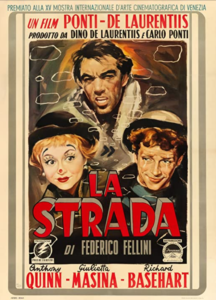
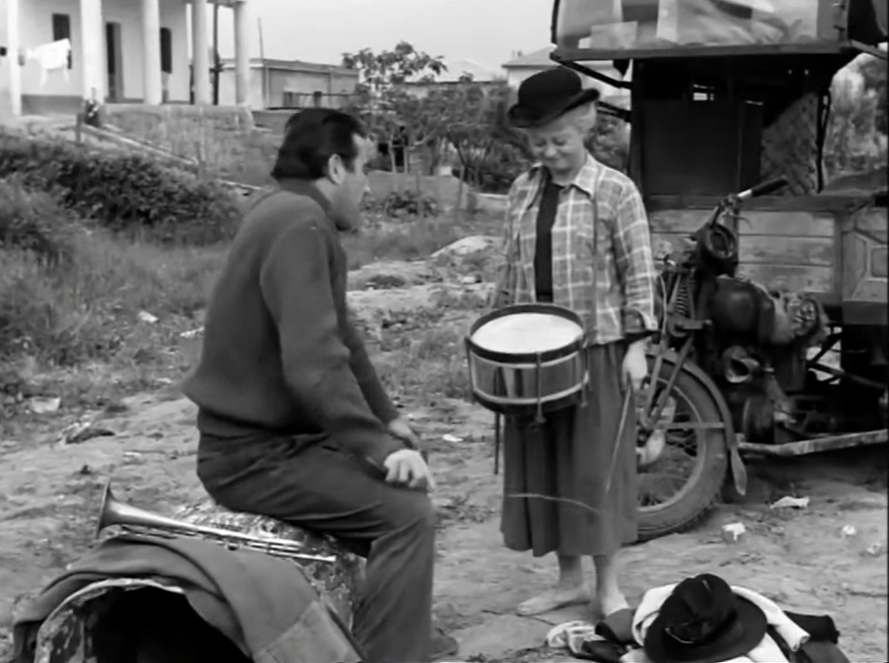
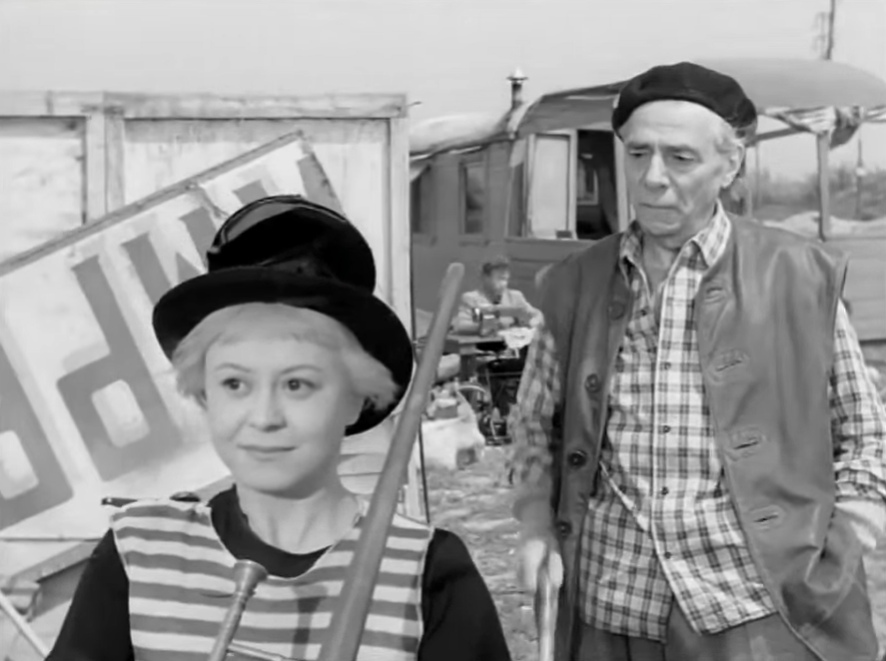

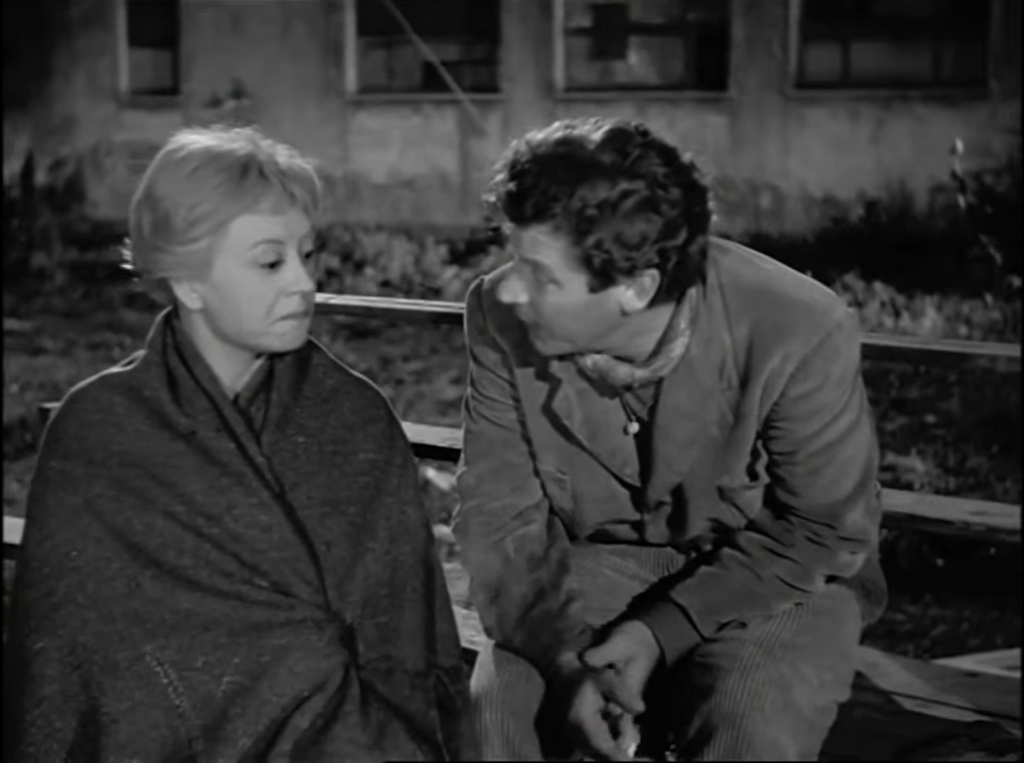
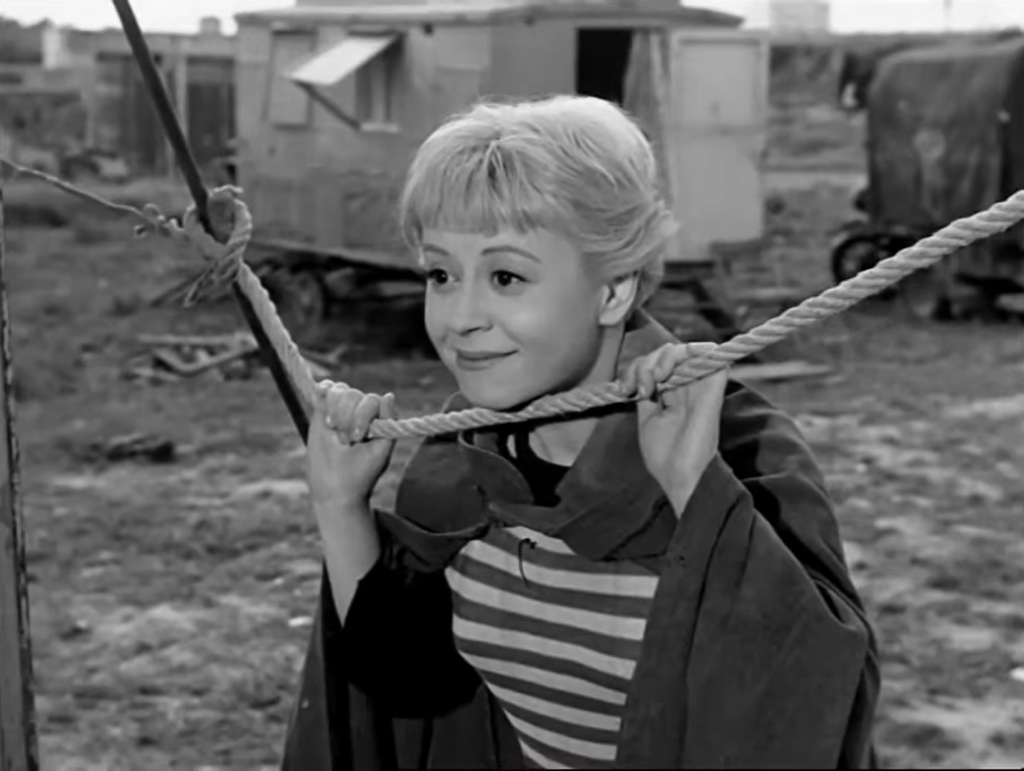
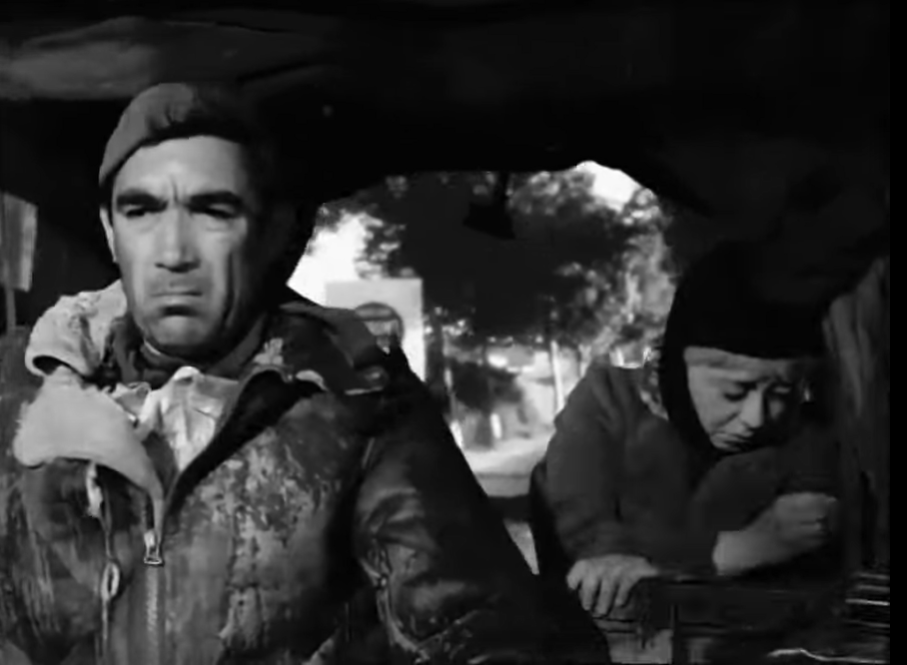
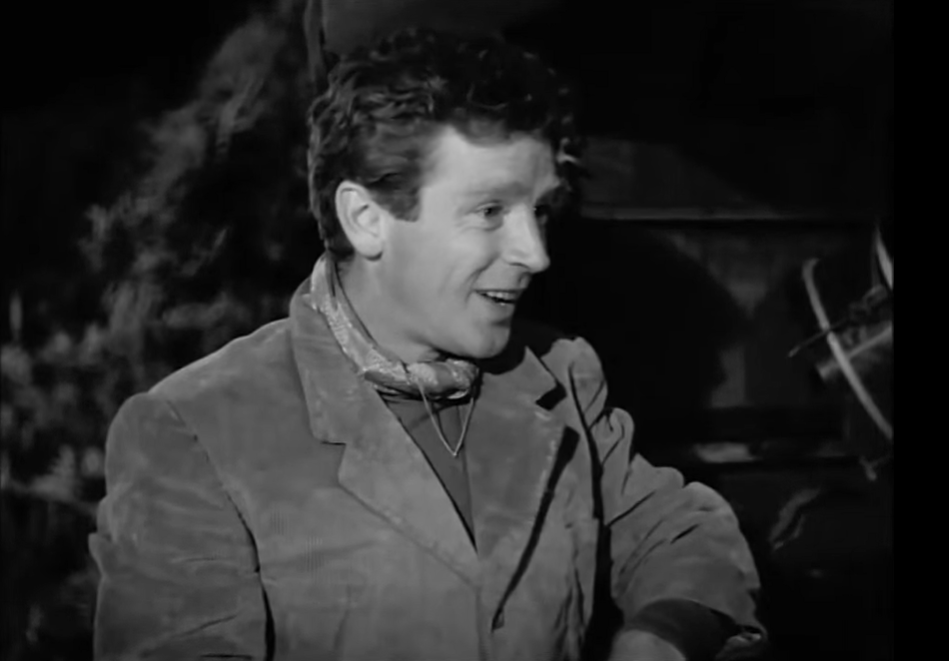
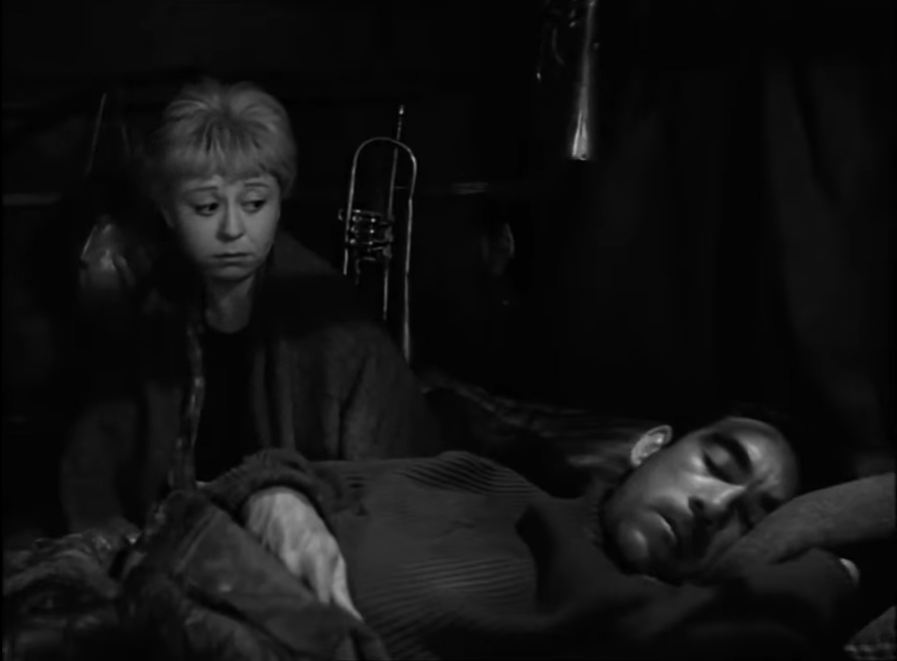
One thought on “Strada, La (1954)”
Must-see, for its solid place in Italian cinema. As per my 7/11/21 post in ‘The ’40s-’50s in Film’ (fb):
“Why was I born?”
‘La Strada’ (1954): It’s sometimes said that art is all well and good but it doesn’t change the world. That may be true; maybe not the world – but apparently it’s transformative for a considerable number of individuals.
(Wikipedia): In a 1957 interview, Fellini reported that (Giulietta) Masina (Fellini’s wife and the star of ‘La Strada’) had received over a thousand letters from abandoned women whose husbands had returned to them after seeing the film and that she had also heard from many people with disabilities who had gained a new sense of self-worth after viewing the film: “Such letters come from all over the world.” (Masina’s character is alluded to as being mentally challenged.)
This is only the second time I’ve seen this film. The first time was when I was a teenager, when it was shown on-campus at a nearby university. Sometimes I think Fellini films resonate best when we’re older; after we’ve been kicked around some. For that reason, it seems to me that Fellini was what we call “an old soul”.
‘La Strada’ is thin on plot; it’s actually a mood piece with a sketched-out character dynamic. After his assistant dies, a traveling street performer – a strongman (Anthony Quinn) – takes on her ‘simple-minded’ sister (Masina) to continue on the road. The guy is an unabashed, soulless brute – and not even the sympathy of a more talented itinerant performer (Richard Basehart) can help.
Neither Quinn nor Basehart spoke Italian; they were both later dubbed. (The voice for Quinn was given by the same Italian actor who spoke for Toshiro Mifune in ‘The Seven Samurai’.) In the ’50s-’60s’, it was, of course, fairly common for Hollywood actors to work in Italy: Clint Eastwood, Rod Steiger, Martin Balsam, Shelley Winters, Max von Sydow – heck, even Ann-Margret!, etc.
But that process must have often been strange, not only for the Americans but for their Italian co-stars. Nevertheless, (as Wikipedia also tells us), Anthony Quinn found working for Fellini invaluable: “He drove me mercilessly, making me do scene after scene over and over again until he got what he wanted. I learned more about film acting in three months with Fellini than I’d learned in all the movies I’d made before then.” Long afterwards, in 1990, Quinn sent a note to the director and his co-star: “The two of you are the highest point in my life — Antonio.”
Fellini called ‘La Strada’ his most representative film. It’s almost certainly his saddest – yet, it’s bolstered significantly by composer Nino Rota’s exquisite, empathetic score.
Academy Award for Best Foreign Film; Silver Lion (Best Director, Venice Film Festival)